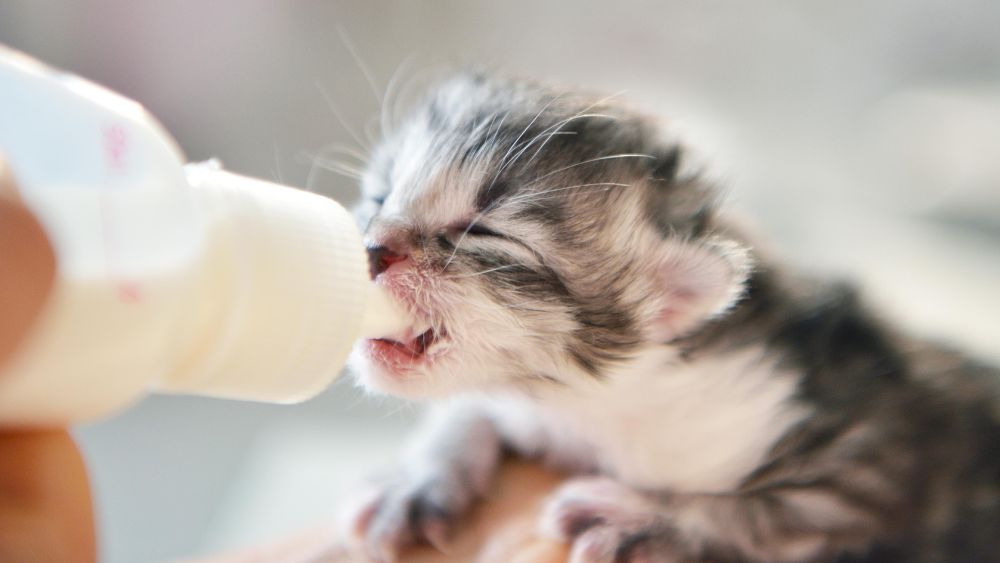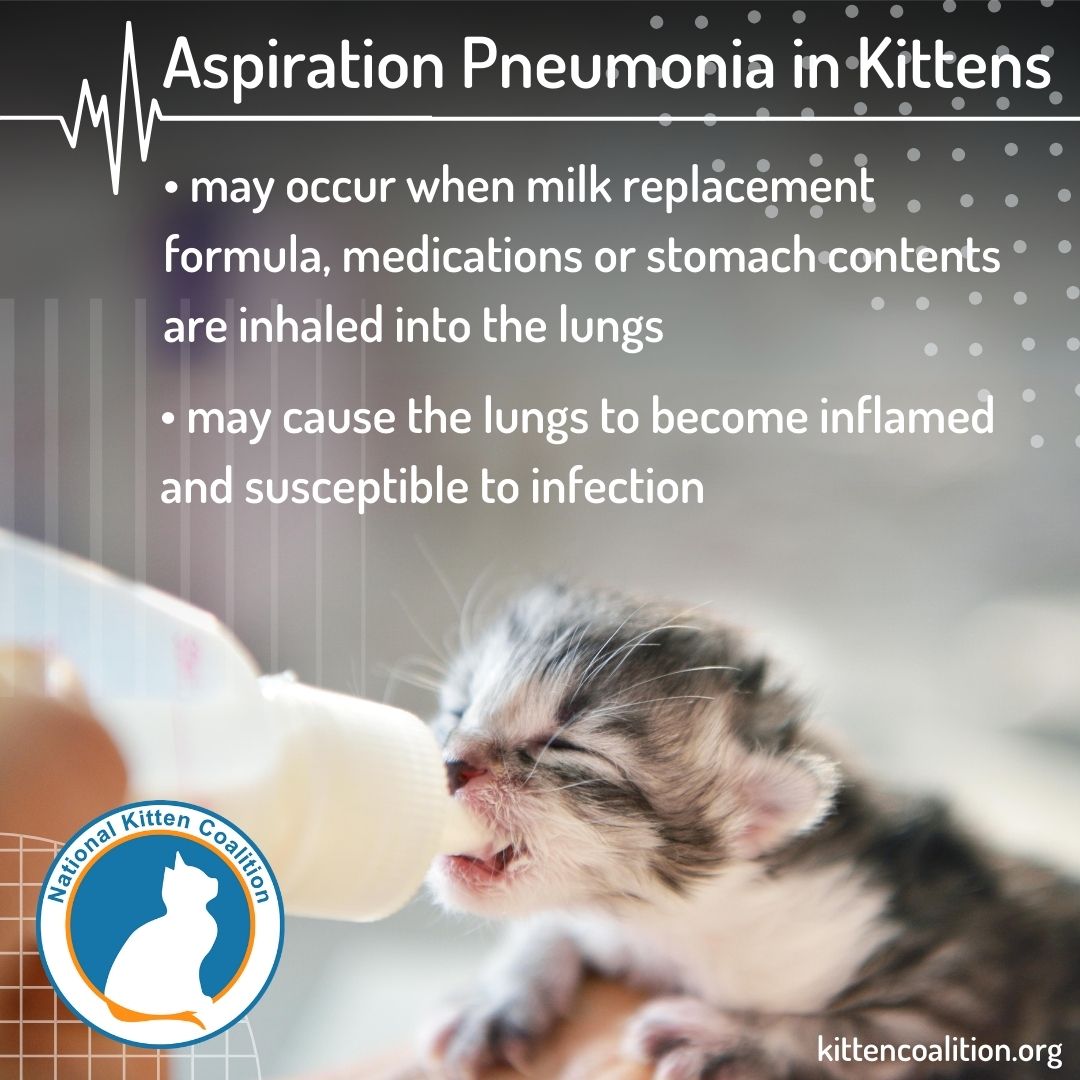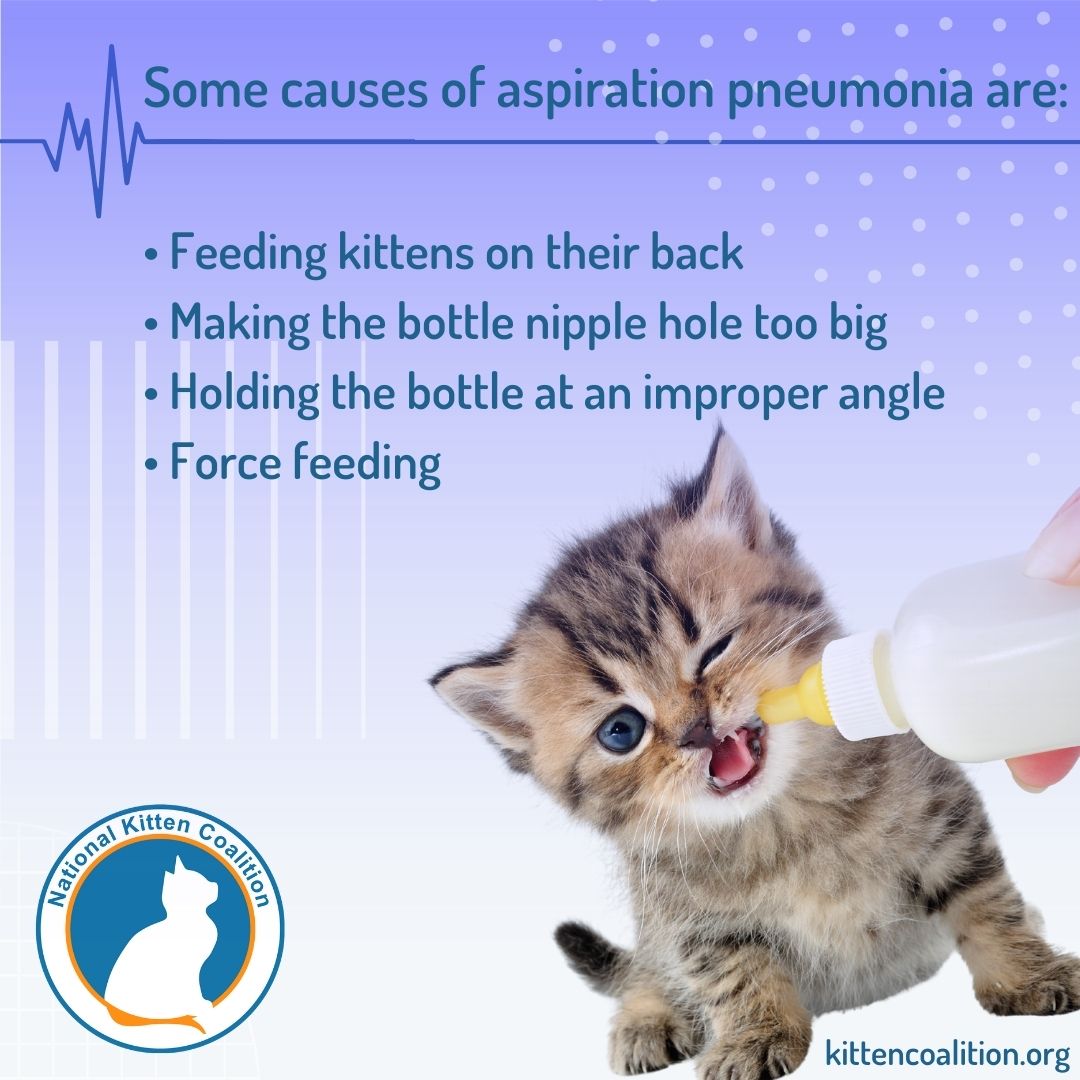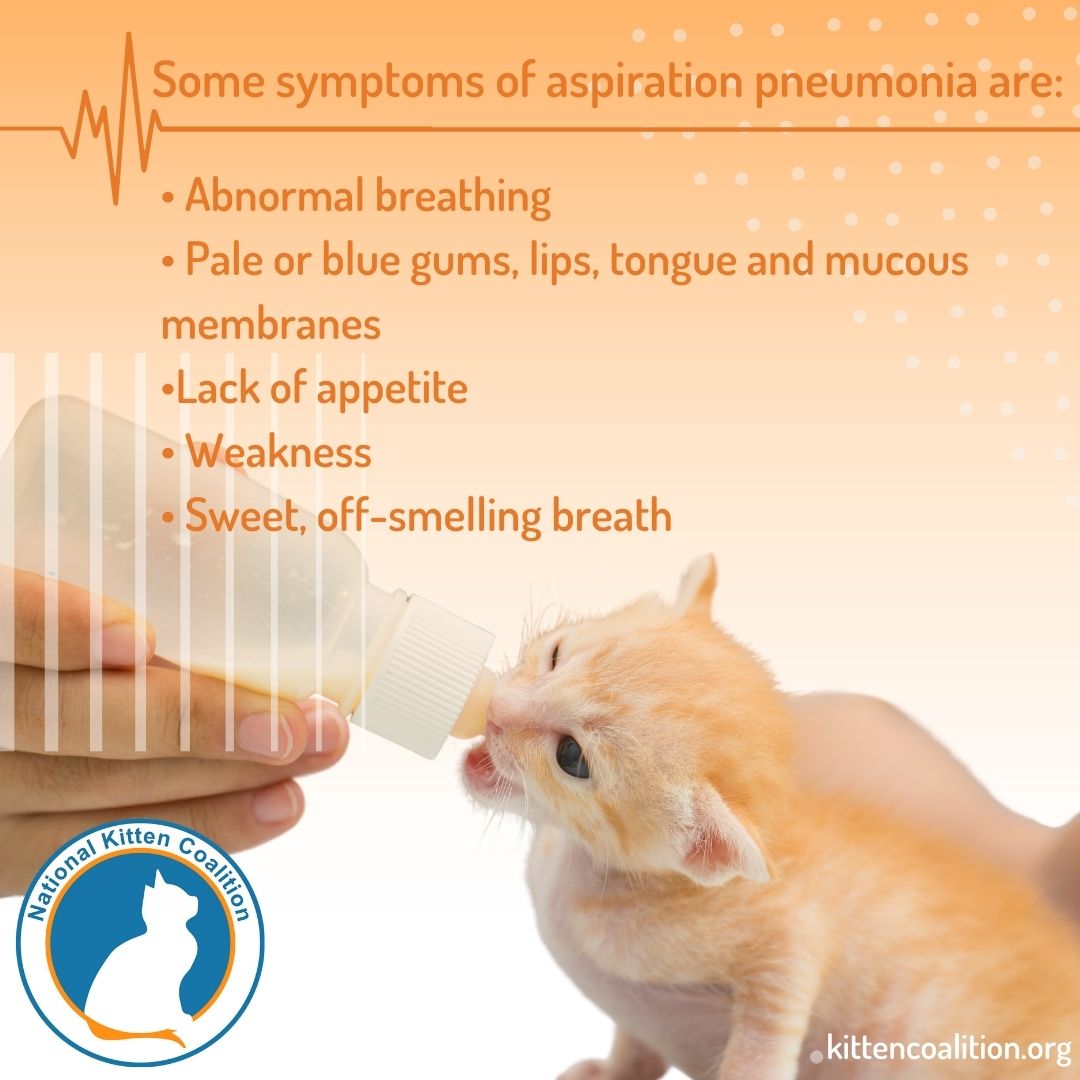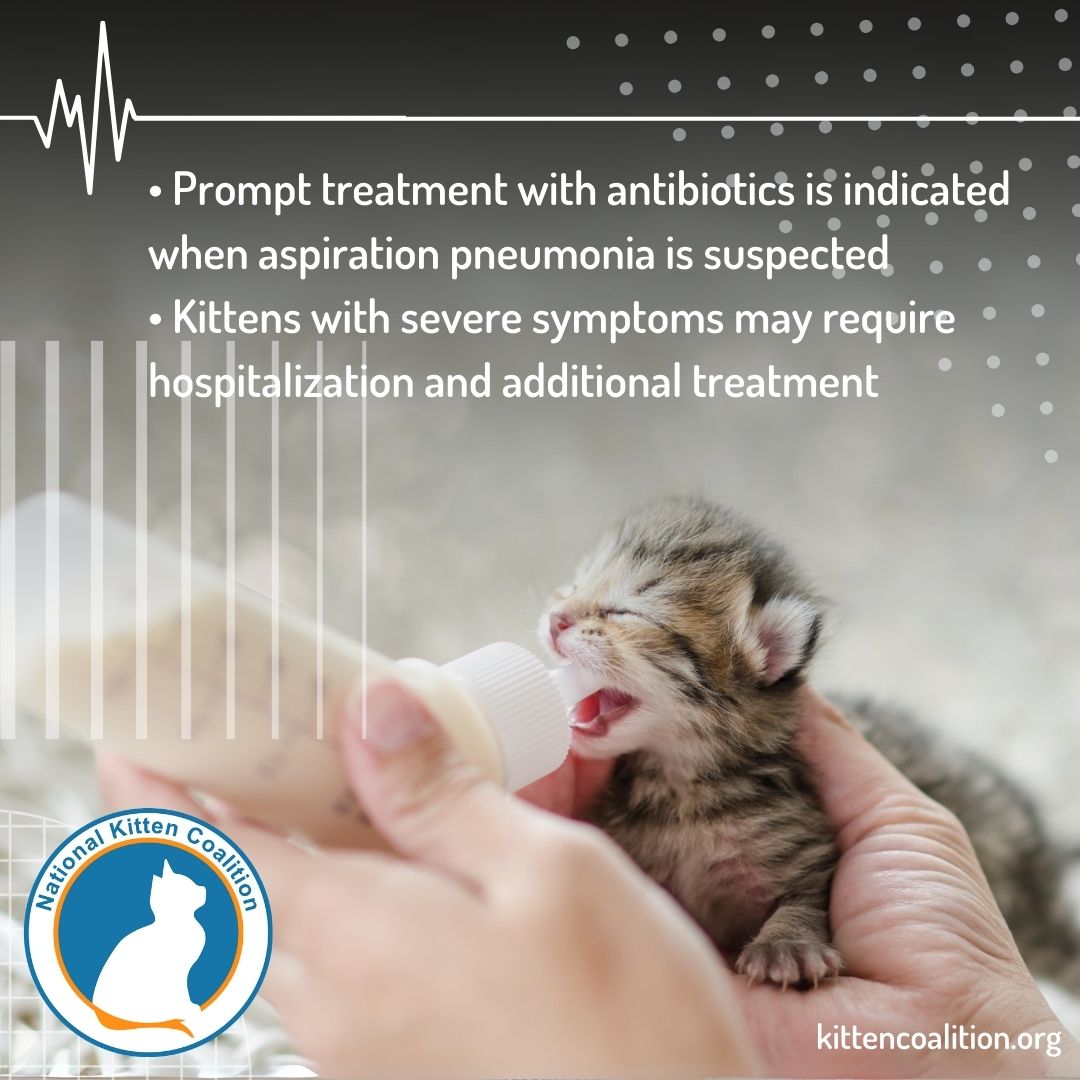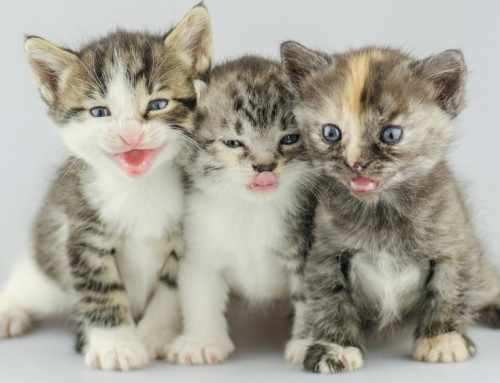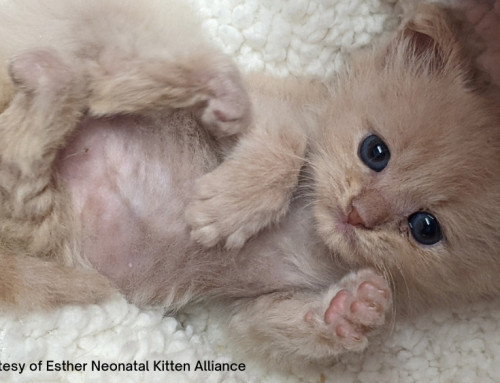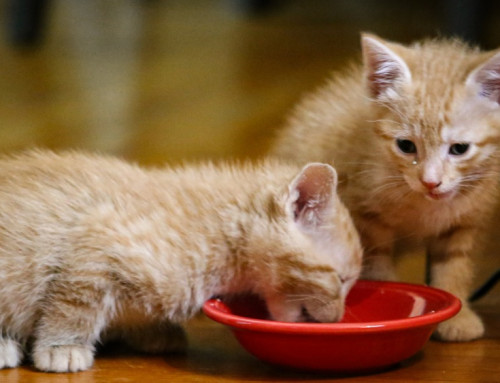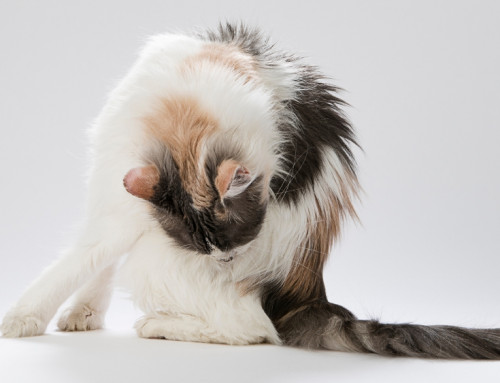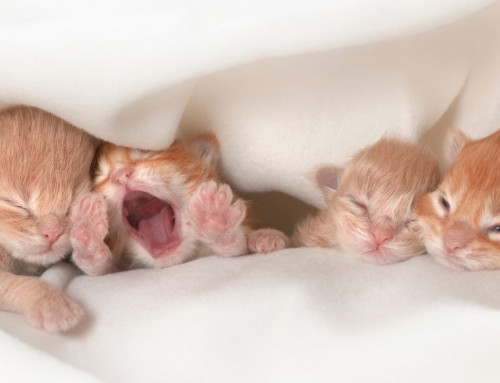Share this resource or email it to a friend!
What Is Aspiration Pneumonia?
Aspiration pneumonia may occur in kittens when materials, such as milk replacement formula, medications or stomach contents, are inhaled into the lungs. These materials cause the lungs to become inflamed and makes the lungs more susceptible to infection. If adequate exchange of oxygen and carbon dioxide in the lungs is disrupted, it can lead to difficulty breathing. If not addressed quickly, aspiration pneumonia can lead to severe illness and death.
What Causes Aspiration Pneumonia?
Kittens are at risk of aspiration pneumonia due to:
- Being fed on their back
- Making the hole in the bottle nipple too big
- Holding the bottle at an improper angle
- Being fed too rapidly
- Pushing on the sides of the bottle to force feed
- Plunging the syringe to force feed
- Exceeding the stomach capacity (amount per feeding)
- Having a cleft palate
- Passing a feeding tube into to the lungs instead of the stomach
- Administering liquid medications improperly
- Vomiting, especially chronically
What Are the Symptoms of Aspiration Pneumonia?
Symptoms can occur quickly or develop slowly and vary from kitten to kitten depending on their size and the quantity of the inhaled material. Symptoms of aspiration pneumonia may include:
- Difficulty breathing, abnormally rapid breathing, panting or noisy breathing
- Open-mouth breathing
- Lip blowing
- Pale or blue gums, lips, tongue and mucous membranes
- Increased heart rate
- Lack of appetite
- Weakness
- Sweet, off-smelling breath
- Runny nose
- Green, yellow or reddish brown nasal discharge
- Fever
- Deep cough or hacking
- Vomiting
- Regurgitation
- Lethargy
- Exercise intolerance, weakness
- Neck arching or stretching
How Is Aspiration Pneumonia Diagnosed?
A history of improper bottle, syringe or tube feeding, one or more of the above symptoms and a physical exam by a veterinarian may lead to a suspicion of aspiration pneumonia. Listening to the lungs with a stethoscope will identify the harsh breathing sounds, particularly wheezing, of air traveling around mucus and fluid in the lungs.
Radiographs (x-rays) of the chest are most commonly used to diagnose aspiration pneumonia. However, it may take several days before aspiration pneumonia is visible on x-rays and taking radiographs of a patient in severe respiratory distress may be risky. Therefore, immediate treatment is indicated when aspiration pneumonia is suspected.
What Is the Treatment for Aspiration Pneumonia?
Antibiotics are the main treatment for aspiration pneumonia. Kittens who are still eating and well hydrated may be able to recover at home with restricted activity and periodic coupage (thumping on the side of the chest) to help loosen mucous inside the lungs.
Kittens with severe symptoms may require hospitalization, and stabilization may require additional treatments, including:
- Intravenous (IV) fluid therapy
- Supplemental nutrition, potentially through a feeding tube
- Bronchodilators to help open up the airways
- Nebulization to keep airways moist
- Supplemental oxygen
Once patients are stabilized, the underlying conditions that caused the aspiration pneumonia will need to be addressed. Follow-up visits will be necessary to ensure the condition has resolved and the lungs are functioning normally.
What Is the Prognosis for Kittens with Aspiration Pneumonia?
The prognosis will depend on the initial cause of the aspiration pneumonia, the severity of symptoms, the promptness of medical care and the response to treatment. The majority of stabilized kittens begin to return to normal behaviors within several weeks and do not have lingering issues, such as lung scarring.
How Can the Risk of Aspiration Pneumonia Be Reduced?
Do not bottle, syringe or tube feed kittens who are too cold. Do not bottle or syringe feed kittens who are too weak to swallow. NEVER feed kittens while positioned on their back because they are at increased risk of inhaling formula into their lungs.
To feed kittens, place them on their stomach, and provide a towel or cloth they can cling to and knead as they would when nursing on a queen. If using a syringe to feed or administer medications, position the syringe (with or without a nipple) on the side of the kitten’s mouth at the cheek pouch, and face the syringe towards the opposite cheek (not towards the throat). Push the plunger very slowly, providing formula a drop at a time (approximately 0.1 mL or less depending on the size or general strength of the kitten). Allow kittens to swallow before providing more formula so that the formula does not end up in their lungs.

